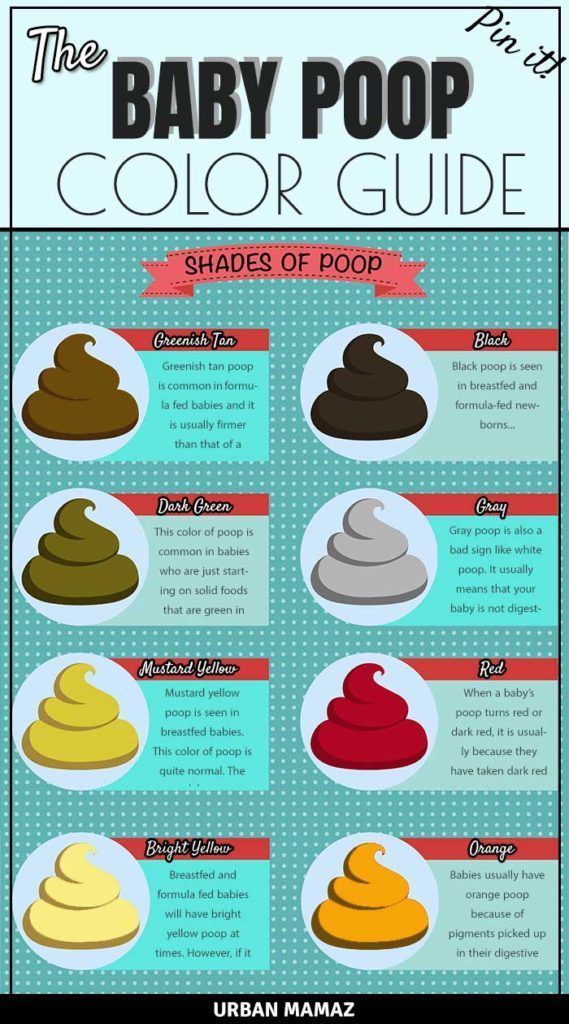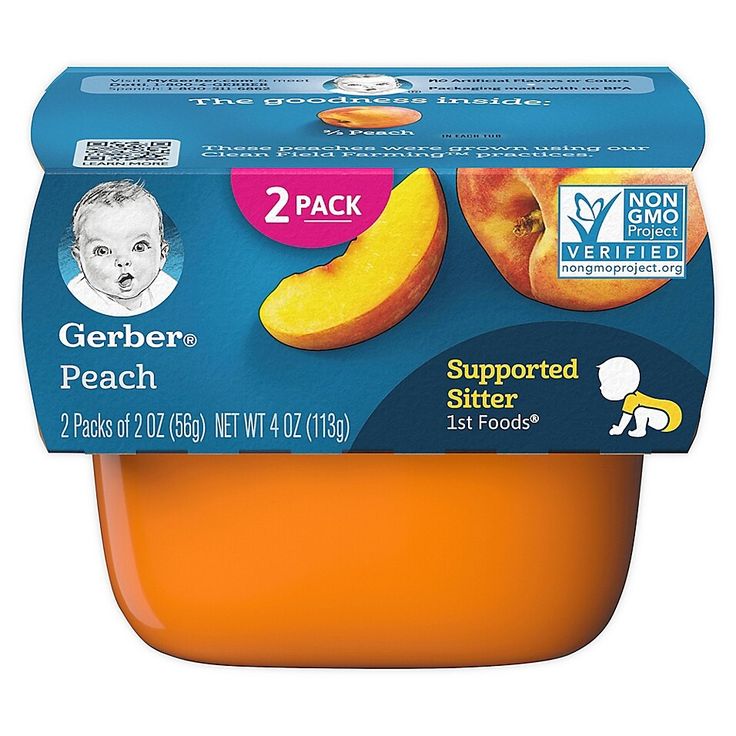Baby cries during feeding solids
Why Baby Crying While Eating Solids?
Baby
ByWinters
HoursUpdated:
Many parents are concerned about their baby’s eating habits and whether or not they are eating solid foods. It might not signify anything wrong if your baby is crying while eating solids.
The cry might simply be a reflexive response to the stimulation of eating and may gradually subside as your baby becomes more used to the new experience.
However, if your baby constantly cries while eating solids, there may be a problem. It could mean that they do not feel comfortable with the experience and are not enjoying it.
This can signify that your baby isn’t getting enough source of nutrition or is experiencing another issue. If you’re concerned about your baby’s eating habits, keep reading to discover how to introduce solids.
Introducing solid foods to a babyIf you are ready to introduce solid foods to your baby, you should know a few things. First, make sure your baby is healthy enough to eat solid foods. If your baby has a fever, is not eating well, or has other signs of illness, wait until he or she is better before introducing solid foods.
Second, feed your baby slowly and carefully to avoid choking. Besides, don’t put pressure on the body. Start with soft baby foods like pureed fruits and vegetables and move on to harder solids.
When introducing solid foods to your baby, it is essential to be careful not to overwhelm them. Start with small amounts of pureed fruits and vegetables, followed by cooked meats and poultry.
You can also try giving your baby a small amount of breast milk or formula mixed with pureed foods. Babies are often hesitant to try new foods at first, but with consistency and patience, they will eventually become interested in solid foods.
When to introduce solids to your babyIntroducing solid foods to your little one seems like a big decision, but it may have a significant impact on their health and development. Start giving your baby solids when your baby reaches 6 months old6 months is the age at which most babies become interested in food.
Start giving your baby solids when your baby reaches 6 months old6 months is the age at which most babies become interested in food.
By this point, they’ve developed enough motor skills to grab objects and try to put them in their mouths. This means it’s time to introduce them to solid foods. There isn’t a specific timetable for when you should start giving your baby solids, but you should generally start by offering small pieces of soft food.
You may try combination feeding with breastmilk or formula milk and some soft solids. Once your baby shows interest in these small couple of bites, gradually increase the size of the pieces until they’re eating solid foods. Be patient! Remember that Introducing a solid meal to your baby is a gradual process.
Don’t overdo it too much too soon can cause your baby to develop food allergies or vomiting. Instead, be gentle and let your baby explore their world through food. Also, monitor the baby’s poop colors to check how the diet affects them.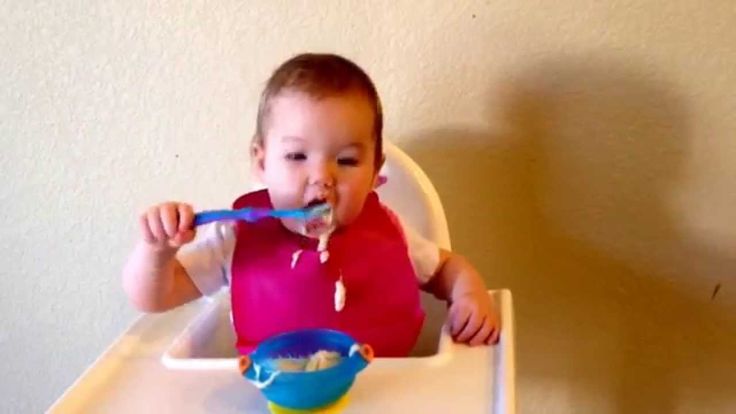
Here are some common reasons your baby may be crying while eating solids:
Hungry/Full:If your baby is crying because he is hungry/full, give him some breast milk or formula as soon as possible. If he is still crying after you’ve given him a meal, try giving him smaller meals more frequently throughout the day.
Tired and uncomfortable:When trying to eat new solids, the baby may easily feel overwhelmed and tired. It may also make the baby feel uncomfortable.
If your baby is crying because he’s under too much stress, try to relieve his stress by doing something he enjoys, such as holding him, going for a walk outside, or reading him a story.
Some babies cry or are colicky baby at the beginning of the breastfeeding schedule. Similarly, eating solids may be new to them to feel comfortable enough.
Teething:A teething baby may become fussy and less willing to try new foods.:strip_icc():format(jpeg)/kly-media-production/medias/36504/original/bayi-susu-formula130615b.jpg) When a teething baby may want breast milk instead of new solid foods.
When a teething baby may want breast milk instead of new solid foods.
Learn how to ease a teething baby to offer comfort. Another way to soothe teething babies is to give them frozen vegetables and bananas.
New texture:A new food may send the baby into a sensory shock. Some babies may not like a particular food because of its texture. With some trials, you may have to figure out the best texture and food combinations.
Some babies may prefer pureed fruits and vegetables. On the other hand, some may like apples or carrots cut into bite-size pieces.
Tips for introducing certain solid foods to your baby’s dietWhen introducing solid foods to your baby, it’s essential to keep in mind their developmental stage and dietary needs. Here are some tips for introducing certain solids to your baby’s diet:
- Start by offering small breast milk or infant formula diluted with water as the first food. Once your baby is able to consume these diluted feeds without any problems, gradually increase the number of solids offered.

- Introduce boiled vegetables and mashed bananas as the first solid foods to infants. Be sure to offer plenty of fluids with this meal, so your baby gets the hydration they need.
- Offer fruits and vegetables early on, but be gentle when trying to feed them to your infant. Try cutting up small pieces and feeding them one at a time so your baby can control how much they eat.
- Feeding your infant fruits and vegetables does not mean they need to start eating table food immediately – they can enjoy these foods later on once they are more developed and have learned how to eat properly.
- Wait until your baby is 6-7 months old before giving them dairy products, such as cow’s milk or cheese. This is because babies can’t digest these foods well before this age. If you do decide to introduce dairy products to your baby’s diet, be sure to give them in moderation.
By observing your baby’s eating habits and reacting accordingly, you can help them learn how to eat effectively. If your baby cries while eating solids, try to stay calm and reassure them that everything is okay. Introduce semi-solid food along with milk.
If your baby cries while eating solids, try to stay calm and reassure them that everything is okay. Introduce semi-solid food along with milk.
Try to provide a safe and comfortable environment for them to eat in, such as sitting on your lap or a chair with back support. If the crying continues after trying these measures, it may be necessary to consult with a doctor to keep your kid a healthy baby.
Faqs:Why does my baby cry when I feed her baby food?Your infant may cry after eating for a variety of reasons, such as colic, gas, formula, acid reflux (gastroesophageal reflux disease), and food sensitivity or allergy. It is not necessary to nurse your child whenever they cry.
Should I worry about my baby gaining too much weight?However, unless it is creating issues for the mom or the baby, oversupply is not a problem. Rarely, health issues such as congestive heart failure, renal abnormalities, and/or endocrine diseases might be linked to excessive weight gain. It is even more crucial to keep breastfeeding if the kid has health issues.
It is even more crucial to keep breastfeeding if the kid has health issues.
Add some pureed pears or applesauce to the cereal for a terrific first fruit. She could be moved to open wide by the additional taste and texture. Alternatively, try a different kind of baby cereal. Some daring palates prefer the stronger flavors of barley or oats to the soft milkiness of rice.
References:https://www.redcross.org.uk/first-aid/learn-first-aid-for-babies-and-children/choking-baby#:~:text=Give%20up%20to%20five%20chest,and%20may%20dislodge%20the%20blockage.
https://intermountainhealthcare.org/blogs/topics/intermountain-moms/2015/11/teething-and-babies/
0 shares
Is Your Baby Crying While Eating Solids? Here’s Why
Introducing your baby to solid foods is exciting! Every parent knows to expect a bit of a mess during this stage.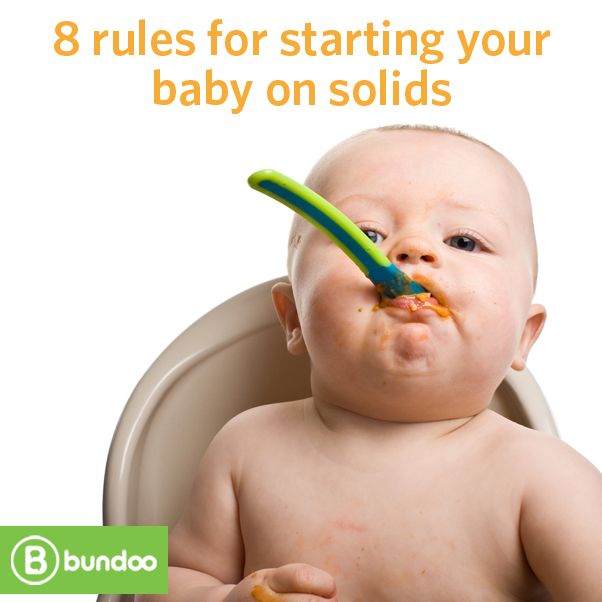 What they don’t expect, however, is crying.
What they don’t expect, however, is crying.
As a matter of fact, one of the most common questions parents have is, “Why is my baby crying while eating solids?”
Keep reading to learn all of the possible answers to that question. You’ll also find a couple of interesting things you’re likely to come across as you introduce solid foods to your baby.
Why Is My Baby Crying While Eating Solids?
Think about all those textures and different tastes awaiting your baby’s taste buds! It sounds so exciting and new, but that’s only because we know how good solid food tastes.
Your baby doesn’t; not yet anyway. Parents see their baby crying while eating solids and they freak out.
We know how important your baby’s dietary needs are, so we compiled a list of all the possible reasons why your baby is crying while eating solid food.
Read on to learn more.
1. Dry Foods
As you begin to introduce solid foods to your baby, remember that they’re still getting used to how food feels in their mouths.
Plus, it starts to coat their mouths and throats after a couple of bites. That’s another thing they’re still getting used to.
Maybe your baby is simply thirsty. Remember that they’ve enjoyed a liquid diet all their lives. Solids can make them feel thirsty even after the first few bites.
Make sure you have some type of liquid nearby so your baby can quench their thirst. This can be breast milk, formula, or water.
Also, find a cup that your baby feels most comfortable with. It’ll go a long way in easing their fussiness, especially when they’re eating solids.
Some babies like sippy cups. Others like cups with a straw. If your baby still wants to drink from their bottle, that’s okay too. Just make sure they’re happy and learning to enjoy their food.
2. Sore Gums
Teething is a time in your baby’s life when their gums will be pretty sore. It could be why your baby has been in such a bad mood lately.
It’s also hard for your baby to swirl solids, even pureed, in their mouths with swollen gums. So, they start to cry to try and get you to feel their pain.
So, they start to cry to try and get you to feel their pain.
If your baby isn’t accepting of solids because of teething, wait a few more days. If you don’t want to stop offering solids during this time, here are some soft foods you can try:
- Cottage cheese
- Bananas
- Apple sauce
- Pureed carrots
- Cold cucumbers
3. Trapped Wind
Is your baby gassy or constipated? Abdominal discomfort is one of the first things parents should keep an eye out for when their little ones are crying while eating solids.
Stomach discomfort isn’t something babies tolerate well. Heck, we don’t, why should they?
Then, you come and try to add to their pain by offering solids, and they just can’t take it anymore. So, they start crying.
Begin by checking your baby’s diaper. If it’s clean, try reflexology massage (Check the video below) on their stomach area to release any trapped gas. Massaging this area helps move things along to help relieve their constipation.
Remember to give your baby plenty of fluids if they’re constipated. Also, focus on giving them foods rich in fibers, such as whole grains, fruits, and veggies.
4. Bonding Time
Why is your baby crying while eating solids? Maybe they miss bonding with you. They’ve spent all of their lives safe and secure in your arms every time they ate. Who’d want to give that up?
If you feel that this is the case, take your baby in your lap and offer a piece of carrot or a spoonful of applesauce.
Do they stop crying? Are they more willing to eat solid foods now that they’re sitting comfortably in your lap? If yes, then, problem solved!
One thing to encourage your baby’s independence is to start feeding time in their high chair.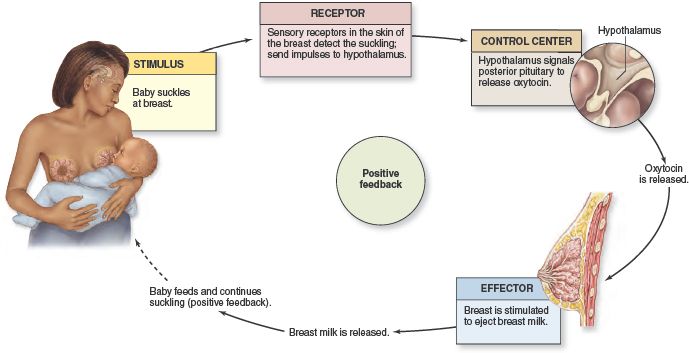 If they cry, then you can put them on your lap. Don’t worry, they’ll grow out of it soon enough.
If they cry, then you can put them on your lap. Don’t worry, they’ll grow out of it soon enough.
5. Allergic Reaction
Food allergies are pretty common in babies. The good news is that most children outgrow them by the time they’re five.
If you feel your baby is allergic to a certain type of food, don’t offer it until you’ve talked with your pediatrician. Also, check to see if there’s any history of food allergies in your family.
Allergic reactions in babies come in many forms. They can include the following:
- Diarrhea
- Gassiness
- Mucus in the stool
- Hives, usually along the mouth
- Watery eyes
- Wheezing
- General crankiness
6. Sensory Shock
It takes time for babies to get used to the new texture and taste of solid foods. Even pureed solid foods are different from the liquid diet they’ve been used to for so many months.
Experts say that it can take your baby up to 20 times until they start accepting a particular food.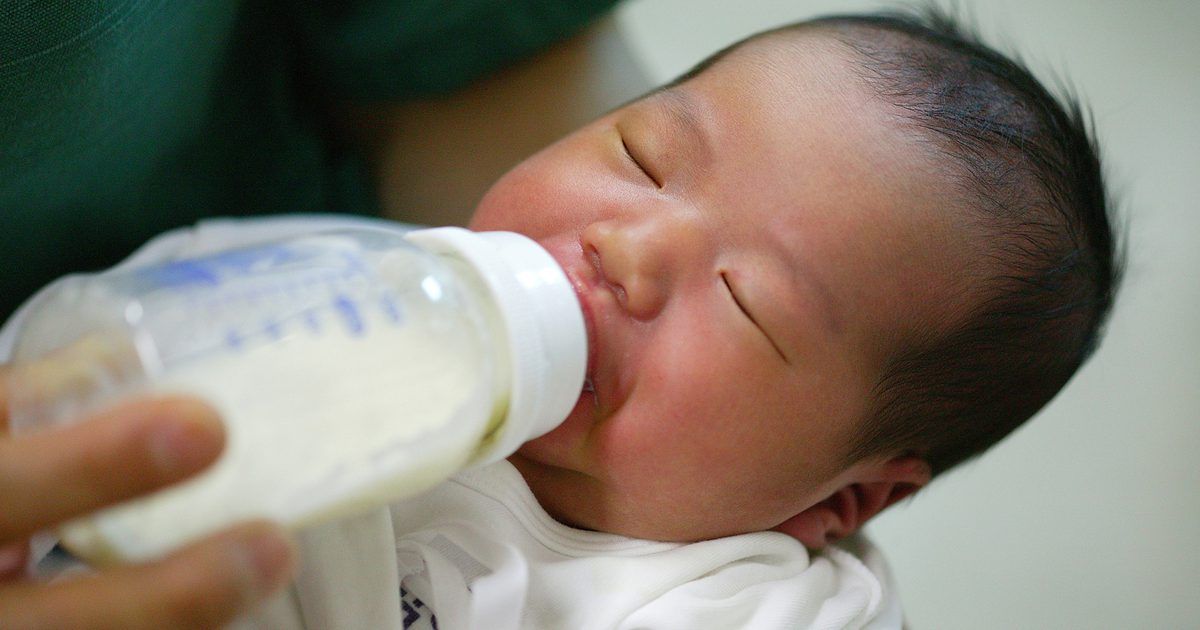 So, follow your baby’s pace and just have fun. They’ll get the hang of it soon enough.
So, follow your baby’s pace and just have fun. They’ll get the hang of it soon enough.
7. A Bug
We’re not talking about the crawly, wriggly kind. We’re talking about the bug or cold that leads to your baby crying while eating solids.
Even a stuffy nose can make your baby cranky and fussy. That’s enough to get them to reject food altogether, not just solids.
The best thing to do is wait it out. It’ll be over in a couple of days, a week at the most. During this time, give your baby plenty of liquids, like breastmilk, water, and even warm herbal teas to make them feel better.
8. Right Timing
When you offer your baby solids, your timing has to be just right. If they’re hungry or too full, they’ll start crying when you offer solid foods.
Try to give small amounts of solid foods an hour after you’ve given your baby breast milk or formula.
This is the perfect time to develop their taste buds without relying on solids to be their main source of nourishment.
If your baby is full, chances are they won’t be interested in eating solids. At the same time, if you wait until your baby is hungry, they’ll be too fussy to accept anything new. All they’ll want is their comfort food, which is the milk they’re used to.
9. Cranky Baby
Babies cherish their naptime. If they’re tired after playtime or an outing, chances are they’ll be too cranky to accept any solids.
The best time to provide solid food is between giving them breastmilk or formula and between their naptime.
The ideal time would be in the afternoon or early evening when they’re in a more playful mood. They’ll be more willing to sit down and try new foods during this time.
10. Force Feeding
Your baby crying while eating solids could be because of how you’re handling the whole feeding process. Are you feeling anxious? Nervous? Angry, even?
Without saying a single word, your baby understands exactly how you’re feeling. They read your facial expressions.
So, if you’re frustrated, your baby will also get frustrated and scared. They may even feel pressured into eating. Then, later on in their lives, this negative experience with food can lead to health issues or eating disorders.
Smile a lot. Try not to focus on how much food actually makes it into your baby’s mouth. Instead, make feeding time playful and fun.
What to Expect When Feeding Your Baby Solid Foods
Starting on solids should be fun and enjoyable for you and your baby. Our advice for getting through this milestone in one piece is don’t set high expectations.
It can get hectic at times, but it’s a precious time in your baby’s life. Enjoy every moment so you can provide your baby with a positive feeding experience that will last their entire lives.
Also, remember to take it slow. Give your baby’s taste buds time to develop and get used to all the new tastes.
Here are a few things to expect when introducing solid foods to your baby.
- Your baby will make adorable funny faces as they experience new textures and flavors
- You’ll be cleaning your baby’s chair, the table, and the floor a lot! Embrace the mess.
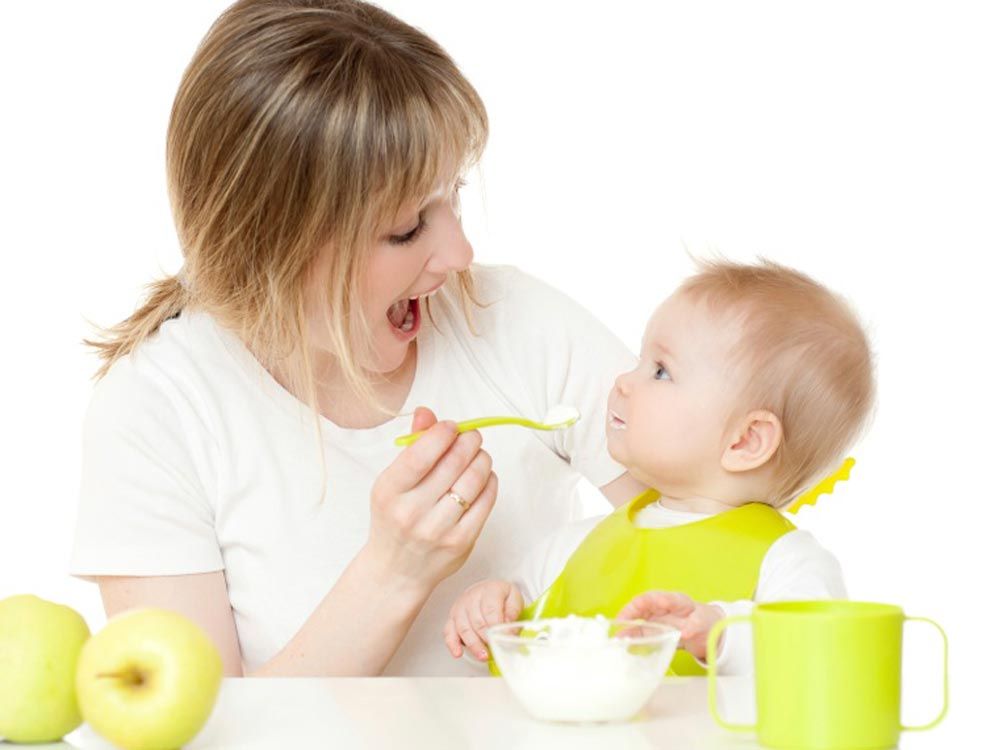
- Introduce one food at a time and wait a week before offering a new one
- Be patient and, more importantly, be consistent at every meal
- Babies usually take longer to get used to veggies because they’re more bitter
- Mixing pureed solids with breast milk or formula, in the beginning, makes it tastier
- Don’t be surprised if you catch a glimpse of a piece of carrot or pea in their diapers!
When Is the Best Time to Start Feeding Your Baby Solids?
Many babies are ready for solids by the time they’re six months old. Experts recommend giving babies only breast milk or formula for the first six months.
Then, after six months, slowly cut back on the liquid diet while introducing small amounts of pureed solids. This is what their digestive systems are designed to handle.
So, don’t rush it. Some babies are more willing to try solid foods, whereas others will be more reluctant to begin this journey of discovery.
That being said, it’s also not a good idea to wait too long to introduce solids. Older babies may be more resistant to learning to chew and swallow. They’ve gotten used to the much simpler method of breastfeeding or bottle feeding.
Older babies may be more resistant to learning to chew and swallow. They’ve gotten used to the much simpler method of breastfeeding or bottle feeding.
Here are a few signs that your baby is ready for solid foods:
Baby-Led Weaning
Many parents wait until their babies have at least a couple of teeth and can sit up on their own before offering actual solids. It’s called baby-led weaning.
Baby-led weaning is when you skip the ‘pureed solids’ stage and go right into offering solids. These are usually thick pieces of sliced veggies or fruits that your baby can hold in their hands.
This usually takes place around eight months when they can hold out their index finger in a pincer grasp.
Interest in Table Food
You know your baby’s ready for solid foods when they begin to watch you eat. They may even try to grab your spoon and imitate what you’re doing.
This is a terrific sign and parents get excited when they see their adorable babies start to show interest in food. Yet, it can be dangerous because certain foods pose a choking hazard.
Yet, it can be dangerous because certain foods pose a choking hazard.
If your baby begins grabbing table foods, try not to leave them unattended. If you do, make sure you remove any foods that are choking hazards, such as the following:
- Whole grapes
- Popcorn
- Hot dogs
- Hard or sticky candy
- Raw veggies
Tongue Thrust Reflex
The tongue-thrust reflex is when your baby’s tongue pushes the food out. Thrust reflex is normal in all babies, but it’s a sign that your baby isn’t ready to be spoon-fed (Check the video below).
To figure out when your baby’s thrust reflex has disappeared. Mix some baby food with a drop or two or breast milk or formula. Place a tiny bit on a spoon or the tip of your finger and feed your baby.
If your baby takes the food, swirls it around a bit, then swallows, that’s great! This means your baby’s tongue thrust reflex has disappeared.
If the food comes back out as soon as you feed your baby, the reflex is still there. Wait a couple of more weeks, then try the test again.
A Final Note
To have your baby crying while eating solids is a normal part of the process; up to a point.
If they keep on crying, then you have to address the issue early on. It’s the best way to prevent any emotional problems your child may suffer when they’re older.
Remember to be patient and consistent. Your baby needs time to get used to this new type of diet.
Come up with creative ways to present solid foods to get your baby engaged. Also, it’s perfectly natural for your baby to play with their food. It’s their way of familiarizing themselves with the new textures and flavors.
So, relax and enjoy this precious time you have with your baby. It’ll be over before you know it.
Stomach problems | Canpolbabies.com
Colic, constipation, diarrhea, vomiting, poisoning, stomach flu? Stomach problems are one of the most common diseases. To effectively deal with them, it is necessary to study the causes and symptoms of various ailments. When you learn to distinguish between them, you can quickly help your baby.
Colic
Cause
- poor functioning of the gastrointestinal tract
- swallowing too much air during feeding (breast sucking)
- digestive problems
What are the symptoms?
If shortly after a feed, the baby begins to arch its back, cry, or have a bloated stomach, it may be colic. How to distinguish normal crying from crying caused by colic? Watch. A child with colic cries for more than 3 hours for more than 3 days, and all this lasts about 3 weeks. Hugs may help for a moment, but if the colic doesn't go away, the baby will continue to cry and won't want to eat anymore. Colic usually occurs between the 2nd and 16th weeks and stops by about 3 months. In addition to crying and bloating, another characteristic sign is bent legs.
In addition to crying and bloating, another characteristic sign is bent legs.
How to prevent?
First of all, watch the baby spit up after eating and massage his tummy.
When you are breastfeeding, drink chamomile and fennel infusions to promote flatulence. Ask your doctor for more information on proper breastfeeding technique to prevent your baby from swallowing too much air.
When the baby is on formula, let him drink the above infusions or fennel water.
If these methods do not help, see a doctor. He will make sure to prescribe the right formula for your baby. However, you should know that colic should simply be experienced, since all methods of treatment bring only a short-term improvement. When the gastrointestinal tract is finally formed, all symptoms will disappear.
Constipation
Causes
- poor functioning of the intestines
- improperly selected milk formula
- improper nutrition.
What are the symptoms?
If you suspect that your child is suffering from abdominal pain (he strains and arches his back) and has trouble passing stools, he is most likely suffering from constipation. Check the contents of the diaper. Hard stools (small, compact balls) are also a sign of constipation. Other symptoms include lack of appetite, flatulence. However, if the baby's intestines are emptied by the child less than once a day, but it still has a mushy consistency, then this is not constipation.
Check the contents of the diaper. Hard stools (small, compact balls) are also a sign of constipation. Other symptoms include lack of appetite, flatulence. However, if the baby's intestines are emptied by the child less than once a day, but it still has a mushy consistency, then this is not constipation.
What needs to be done?
1. Exercise for the baby: bend his legs at the knees, gently pressing them to the tummy, and then straighten.
2. Massage: Massage baby's tummy
3. Tea: Give your baby a few teaspoons of fennel tea.
4. Change the child's diet in consultation with a specialist.
5. Call your doctor if:
- your child is regularly constipated.
- constipation occurs rarely, suddenly, but lasts a very long time,
- there is blood in the child's stool. What are the symptoms?
What does diarrhea look like? It is more watery than normal, frothy, and may have an unpleasant sour odor. Other symptoms of diarrhea include abdominal pain, lack of appetite and a general low mood, and a very high fever can also be present. As a rule, during diarrhea, the child empties the bowels more often than usual. You should also check the stool for mucus or blood.
As a rule, during diarrhea, the child empties the bowels more often than usual. You should also check the stool for mucus or blood.
What to do?
If diarrhea occurs or is suspected, seek medical attention immediately, especially if it is a newborn. Older children should be given plenty of fluids to prevent dehydration. However, often the baby does not want to drink much. Therefore, the best solution is to consult a doctor.
When you are breastfeeding and your baby has diarrhea, you should be especially careful about what you eat. Do not eat foods that can cause diarrhea or heavy meals. A formula-fed baby should only be allowed to drink for about 4 hours. When transferring the baby to solid food, it is recommended to take foods such as rice or boiled carrots.
Stomach flu
Causes:
- rotavirus infection of the gastrointestinal tract
What are the symptoms?
You may be familiar with these unpleasant symptoms, because adults with gastric angina experience similar symptoms: diarrhea, vomiting, weakness, lack of appetite, and may also have fever.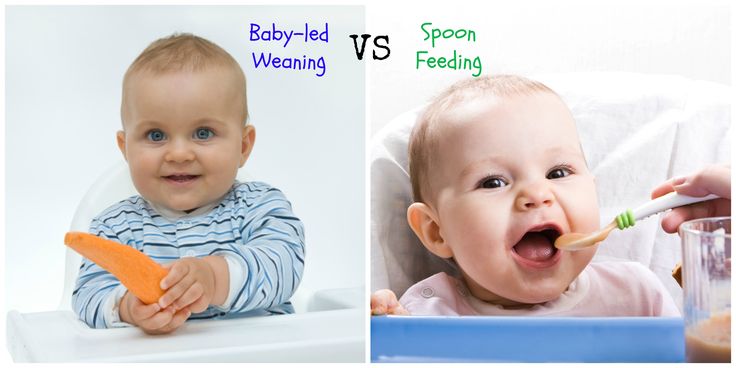
What to do?
As in the case of diarrhea, you should immediately contact a doctor who will help the child in the fastest and most effective way. Home methods may not be helpful.
Poisoning
Possible causes:
- improperly prepared formula
- eating expired food
What are the symptoms?
Symptoms are similar to stomach flu: diarrhea, vomiting and fever may also occur, and there is no appetite.
What to do?
In this case, you should also contact your doctor immediately.
Parasitic diseases
May occur if:
- there is a pet at home
- baby puts dirty hands or unwashed food in mouth.
What are the symptoms?
When a child has a stomach ache (it does not have to be a sharp pain), no appetite, sleeps restlessly (grinding his teeth, scratching his buttocks), he may be infected with parasites. Additional symptoms may include diarrhea, flatulence and constipation, as well as a rash.
What to do?
You should definitely take your child to the doctor. Don't delay, a series of stool tests may be needed. If a doctor diagnoses a parasitic infection, medication will likely be prescribed for the child and the rest of the family.
Allergies and food intolerances
Possible causes:
- the child may be allergic to, for example, milk or other foods. Make sure this ingredient is not included in his diet.
- food intolerance: allergy to eg lactose, gluten.
What are the symptoms?
Frequent pain in the abdomen, accompanied by lack of appetite. When you watch your child for a long time, you may notice that he does not gain weight, he periodically has diarrhea and constipation. These symptoms occur after eating a product to which the child may be allergic or intolerant; the child may also develop a rash.
What to do?
Remember the circumstances in which the symptoms occur. This will help the doctor adjust your child's diet.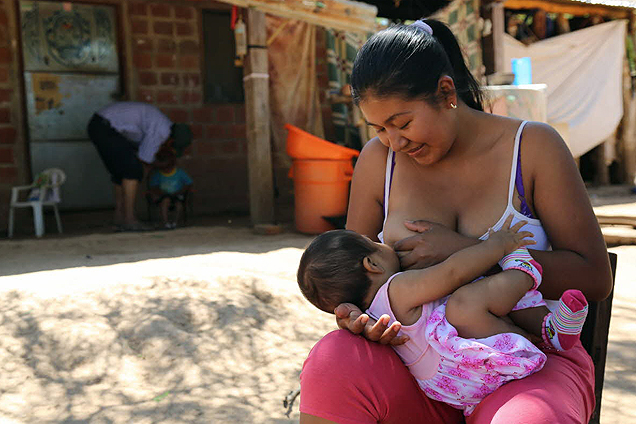
Appendicitis
Cause:
- infection
What are the symptoms?
First of all, a sharp pain in the abdomen (first in the navel, and then lower on the right), which does not go away after an hour. The child bends his legs when he lies down. Sometimes the disease is accompanied by fever and vomiting.
What to do?
If the above symptoms do not disappear within an hour, I recommend that you see a doctor. If your fears are confirmed, hospitalization and surgery will be required.
Child behavior at the table - agulife.ru
06/28/2018
≈ 3 min read time
Contents
- 4-6 month old baby refuses complementary foods
- Tips for introducing complementary foods up to 6 months
- Taste preferences of a child from 7 months to 1 year
Why children can refuse food, be capricious and scandal during the meal, how to overcome all the difficulties and teach the kid the rules of behavior at the table, arouse his interest in food, including new food, and what steps the whole family needs to take for this.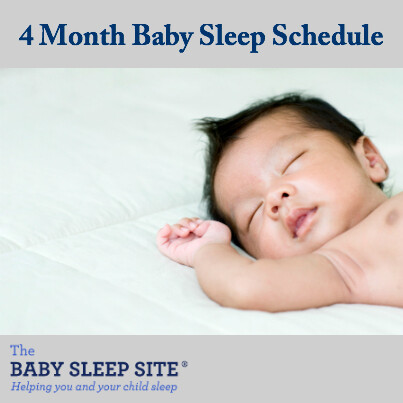
What if the child refuses to eat and goes hungry? Is it dangerous?
Natalia Kruglova
Nutritionist, nutritionist, pediatrician
Child nutritionPrinciples of healthy child nutrition
At 4-6 months, when weaning begins, many babies are reluctant to eat. Some agree to try unfamiliar food, but they are more interested in spreading it on the table for feeding. Others may even be afraid of it. Why is this happening?
-
If the child does not want to drink from a bottle and eat from a spoon, this may mean that he is not yet ready. In this case, it is worth making it so that he becomes a member of the family breakfast or lunch: just put him at this moment in a high chair or pick him up.
 At some point, the child will show interest in cutlery and utensils, and then he himself will want to use his own plate and spoon. Sometimes the baby is ready to drink from a sippy cup or straw, but not from a spoon. If he does not like all the options offered, wait a week or two, and the situation will change.
At some point, the child will show interest in cutlery and utensils, and then he himself will want to use his own plate and spoon. Sometimes the baby is ready to drink from a sippy cup or straw, but not from a spoon. If he does not like all the options offered, wait a week or two, and the situation will change. -
If the baby is ready to try some foods, but does not want to try others. This is normal: every person, even such a small one, has his own tastes. You can follow the complementary feeding schedule less strictly and introduce the products recommended for this schedule later (but not earlier!) The desired time. It will be easier for the baby if a certain feeding ritual is established and if the new product is introduced when he is calm and in a familiar environment. Do not forget that it is better to start complementary foods with neutral, not sweet tastes.
-
If the baby throws food. This is absolutely natural, because for a baby, food is not only nutrition, but also an amazing new substance that has yet to be explored.
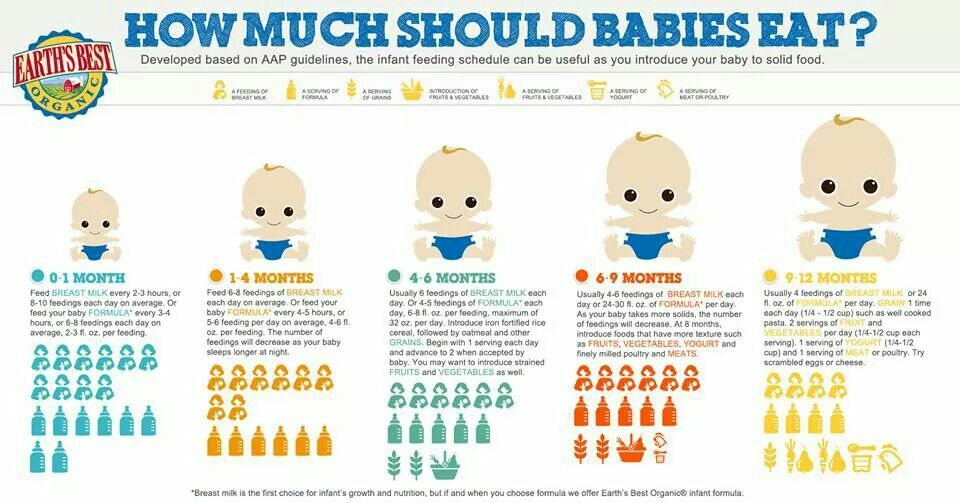
-
When a child throws mashed potatoes and splashes with juice, he is interested to see not only what will happen with the products, but also your reaction. The mechanism is simple: if an adult reacts emotionally to such an act of a baby, then he wants to repeat it again. If you calmly take food from the child and get out, his interest in such actions will disappear.
-
Since the process of getting acquainted with complementary foods will inevitably be associated with a mess and constant experiments of the baby, parents need to treat them with a dose of humor. Let the child get dirty in zucchini puree from head to toe - if as a result this healthy vegetable becomes interesting to him, why not? However, it is better to allow such games not on a highchair, but in another place, so that the baby understands that playing and eating are different activities.
-
If the baby is happy to try new food, but reacts with screaming and crying to an unfamiliar product.
 He may be frightened by something that seems familiar to us. Maybe he has digestive problems. Be calm about his reaction and do not insist on continuing the dinner if the baby cries and screams.
He may be frightened by something that seems familiar to us. Maybe he has digestive problems. Be calm about his reaction and do not insist on continuing the dinner if the baby cries and screams.
We talk in detail about how, when and with what foods to start complementary foods, here. In doing so, several important points should be taken into account.
- Only try new foods when your baby is healthy. Careful attention should be paid to his digestion. If the child suffers from colic or indigestion, new complementary foods should not be introduced.
- Let your baby try a new product not at the first, but at the second or third feeding (before lunch), before offering him breast or infant formula.
- Start with one-component purees, without the use of any additives.
- Do not give your baby more than a third of a teaspoon of a new product for the first time, bring it up to the recommended dose for age in 1 - 2 weeks.
- Between the introduction of new dishes in the crumbs menu, take breaks of at least 2 weeks.
 During this time, you will have the opportunity to notice allergic reactions to a particular product, which may be indicated by signs such as a change in the nature of the stool, rashes, redness and peeling of the skin.
During this time, you will have the opportunity to notice allergic reactions to a particular product, which may be indicated by signs such as a change in the nature of the stool, rashes, redness and peeling of the skin. - Avoid using exotic fruits and vegetables as first foods.
- Consult your pediatrician before starting complementary foods.
At the beginning of the introduction of complementary foods, children can try everything with the same interest. But already at the age of 7 months, the child is able to form preferences, choosing one food more often than another. Children react differently to certain foods, and after a year they try to take a spoon from an adult and eat what they like best.
Are there any common eating habits that all children have? No, every child is unique. Someone likes carrot puree, and someone likes apple puree. If you offer your baby a puree of one, rather than several mixed flavors, you will quickly determine what he likes.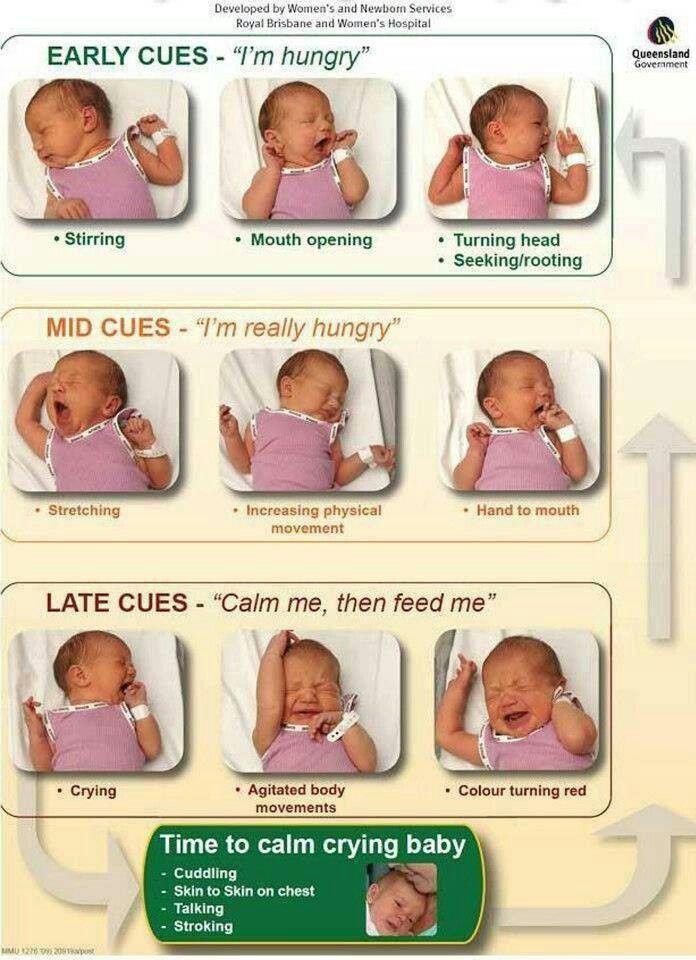
How to study the tendencies of your child?
- Prepare 3 to 5 small meals, one food each.
- Place them on identical saucers and serve one spoon at a time.
- Between "approaches" to the product, pause so that the baby has time to figure out what's what.
- He should not be very hungry, because in a state of severe hunger, we perceive the taste of the product worse.
You can easily understand which food your baby likes best.
If your child categorically refuses food of a certain consistency (for example, solid or pieces), prefers food of one color, or food in unusual conditions (only in the dark or only on the floor) - you should go to a child psychiatrist to rule out autism spectrum disorders.
Bon appetit to your baby!
References
- Masaru Ibuka. After three it's too late. Moscow: Publishing house "Alpina non-fiction", 2015.
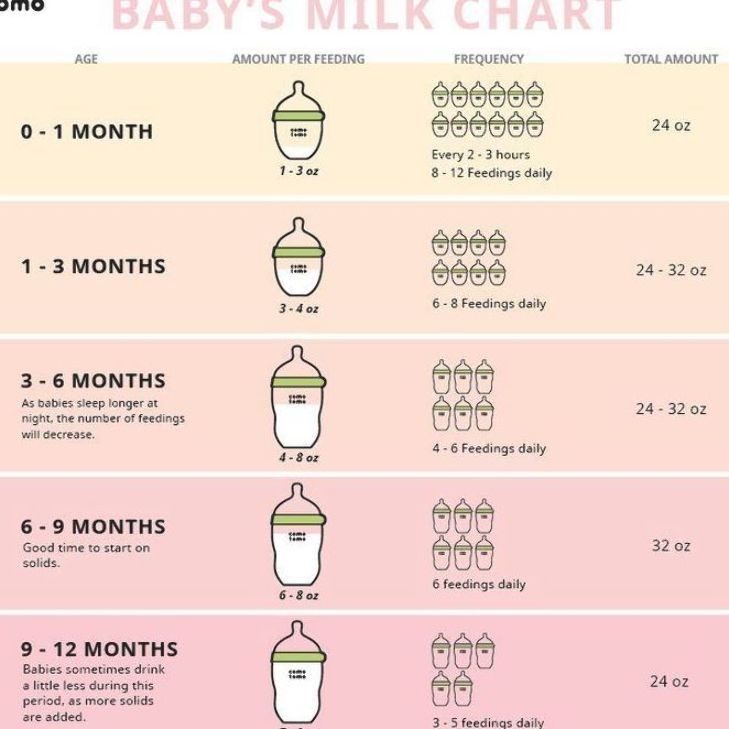 - 224 p.
- 224 p. - Filonenko Elizabeth. Raising a child from 1 year to 3 years. Reboot. Moscow: Phoenix Publishing House, 2018. - 286 p.
- Litvak M.E. 5 methods of raising children. Moscow: AST Publishing House, 2015. - 288 p.
Is it worth it to transfer a one-year-old baby to a common table?
Mother's milk is the ideal food for an infant. Continue breastfeeding for as long as possible, including after the introduction of complementary foods, in accordance with WHO recommendations.
The first feeding of a child with artificial feeding by months
Mother's milk is the ideal food for a baby, especially in the 1st year of his life. It is an important source of nutrients and energy, which is why WHO recommends that breastfeeding be continued for as long as possible, up to two years of age.
First foodComplementary foods while breastfeeding
Mother's milk is the best food for a baby, especially in the first six months of life.




